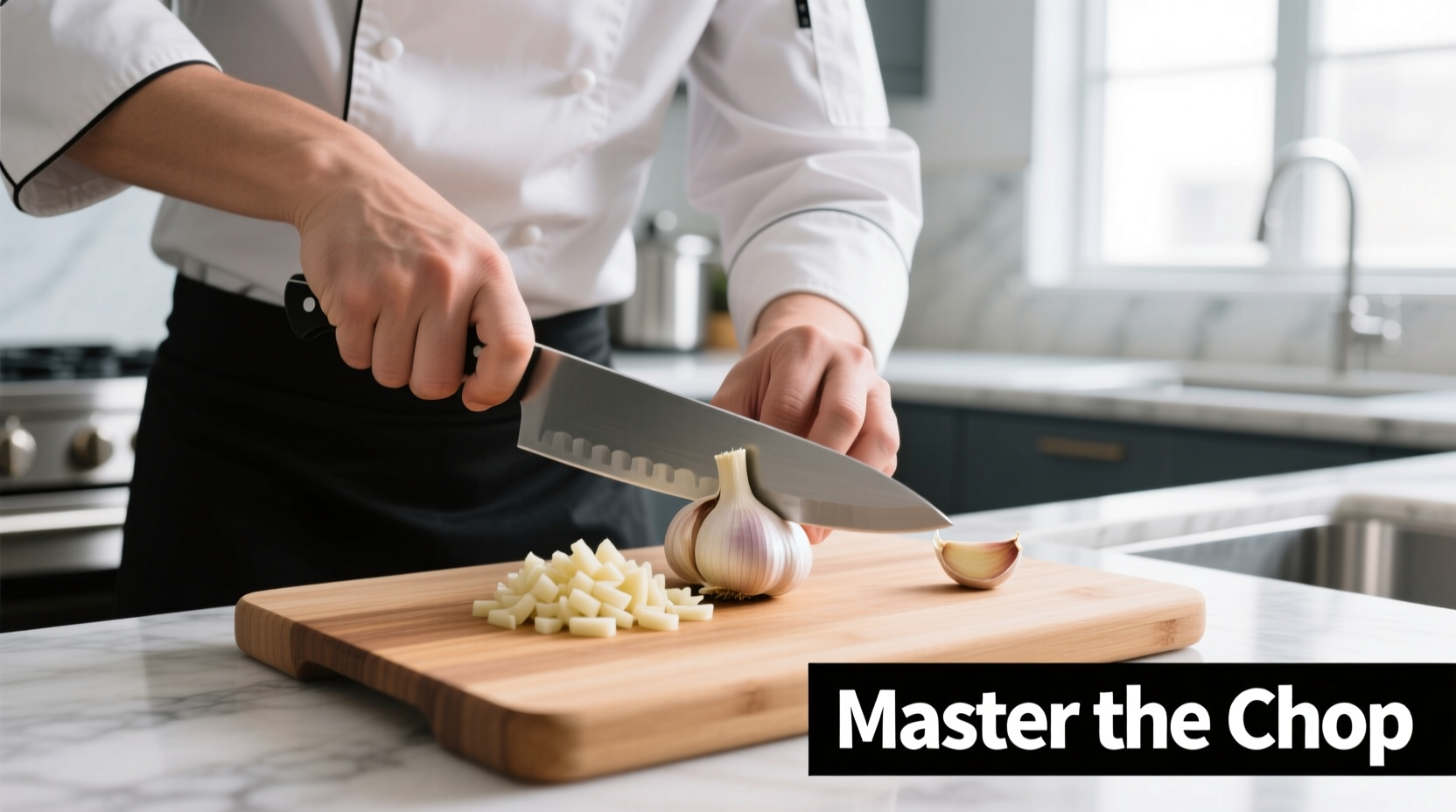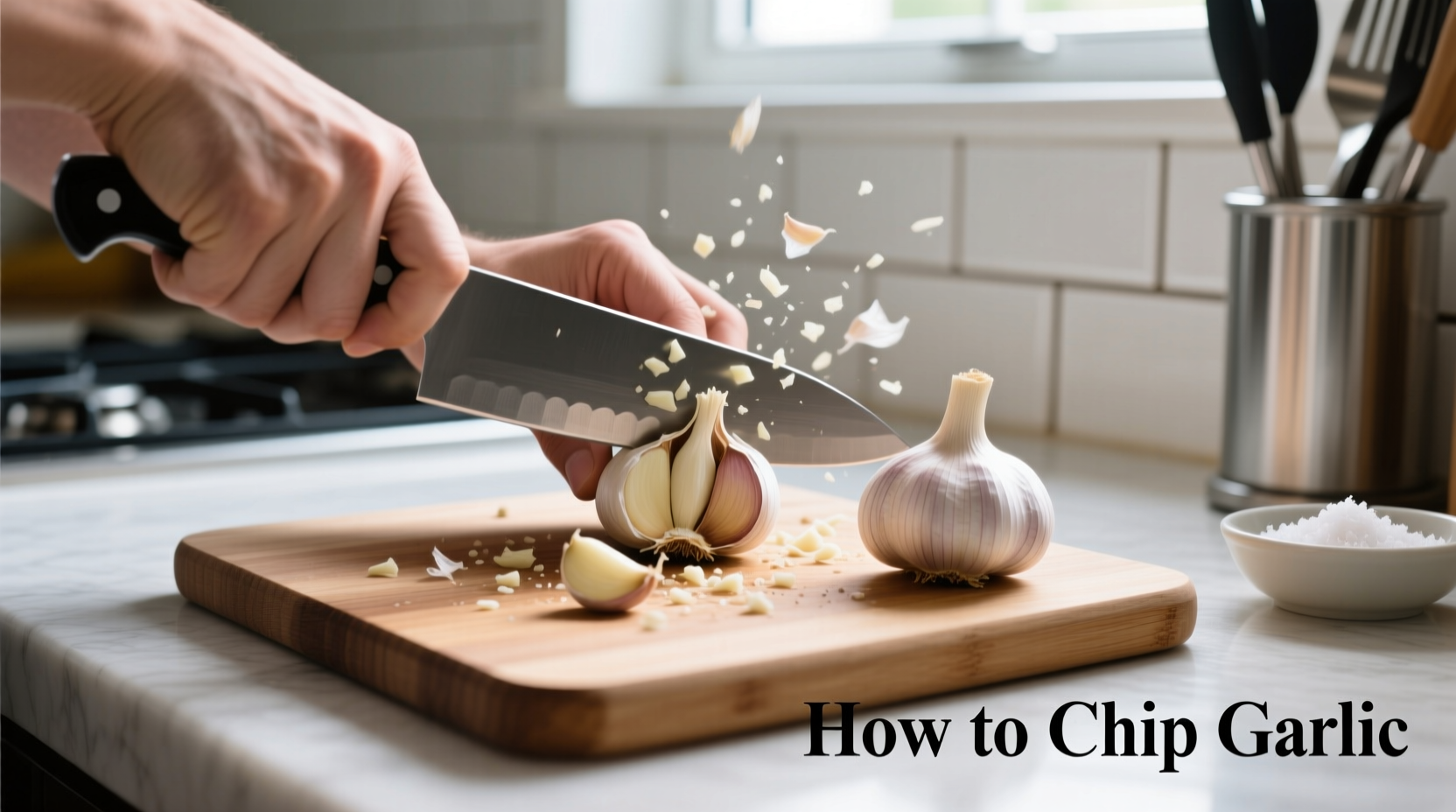Master the Art of Garlic Chopping: Professional Techniques for Perfect Results
Chopping garlic properly transforms your cooking by ensuring consistent flavor distribution and optimal aroma release. Many home cooks struggle with uneven pieces, slippery cloves, or safety concerns, but with the right technique, you can chop garlic like a professional chef in under 30 seconds.
Why Proper Garlic Chopping Matters
How you chop garlic directly impacts both flavor intensity and cooking performance. When garlic cells are cut, enzymes interact to create allicin—the compound responsible for garlic's distinctive aroma and health benefits. Finer chopping creates more surface area, releasing stronger flavor faster. Understanding this biochemical process helps you choose the right technique for each recipe.
| Chopping Method | Surface Area Created | Flavor Release Speed | Best Recipe Applications |
|---|---|---|---|
| Whole crushed clove | Low | Slow | Infused oils, braises, roasts |
| Coarsely chopped | Moderate | Moderate | Stir-fries, hearty sauces |
| Fine mince | High | Fast | Vinaigrettes, marinades, delicate sauces |
| Paste (mortar & pestle) | Very High | Immediate | Curry bases, aiolis, compound butters |
Essential Tools for Perfect Garlic Chopping
A sharp 8-inch chef's knife provides the ideal balance of control and efficiency for garlic chopping. Professional chefs at the Culinary Institute of America consistently recommend carbon steel or high-carbon stainless steel blades that maintain sharpness. Your cutting board should be stable—wood or soft plastic boards prevent blade dulling better than glass or marble surfaces.
While some cooks reach for a garlic press, Food Network's test kitchen found these often create bitter, over-processed garlic that burns easily. Reserve presses for situations where you need immediate garlic infusion without texture, like quick salad dressings.
Step-by-Step: The Professional Chopping Technique
1. Prepare Your Garlic
Place cloves on your cutting board and flatten each with the side of your knife blade. This loosens the skin for easy peeling. For large batches, Serious Eats' research shows placing cloves in a lidded container and shaking vigorously separates skins with minimal effort.
2. Position Your Knife Correctly
Grip the knife handle with your dominant hand while placing your index finger and thumb on the blade's spine near the heel. This "pinch grip" provides maximum control. Position the clove with its root end facing away from you.
3. Execute the Chop
Make thin lengthwise slices through the clove without cutting all the way through at the root end. Rotate 90 degrees and make crosswise cuts. Finally, use a rocking motion with the knife while holding the tip steady, gathering pieces toward the heel of the blade. Keep your non-knife hand in a "claw grip" with fingertips curled under for safety.

Pro Tips for Better Results
Prevent sticking by lightly oiling your knife blade or using a ceramic knife. When chopping multiple cloves, sprinkle a pinch of salt over the pile—this creates friction that helps bind pieces during the final rocking motion. For recipes requiring subtle garlic flavor, remove the green sprout from the center of older cloves, which can impart bitterness.
Common Mistakes to Avoid
Never use a rocking motion with the knife tip lifted off the board—that's how kitchen accidents happen. Avoid over-chopping garlic in a food processor, which creates a gluey paste that burns instantly when heated. And never start cooking with garlic in a cold pan—always heat your oil first to prevent scorching.
When Technique Matters: Context Boundaries
Different recipes demand different garlic preparations. For Italian pasta sauces, fine mincing ensures even flavor distribution. In Chinese stir-fries, slightly larger pieces provide flavor bursts. When making garlic bread, coarsely chopped garlic mixed with butter creates delightful texture contrast. Understanding these context boundaries prevents flavor imbalances in your cooking.
Storing Chopped Garlic Properly
Chopped garlic begins losing potency immediately. The USDA recommends using freshly chopped garlic within 24 hours for optimal flavor. Store in an airtight container in the refrigerator, but never in oil at room temperature due to botulism risk. For longer storage, freeze chopped garlic in olive oil cubes—this preserves flavor for up to 3 months.











 浙公网安备
33010002000092号
浙公网安备
33010002000092号 浙B2-20120091-4
浙B2-20120091-4